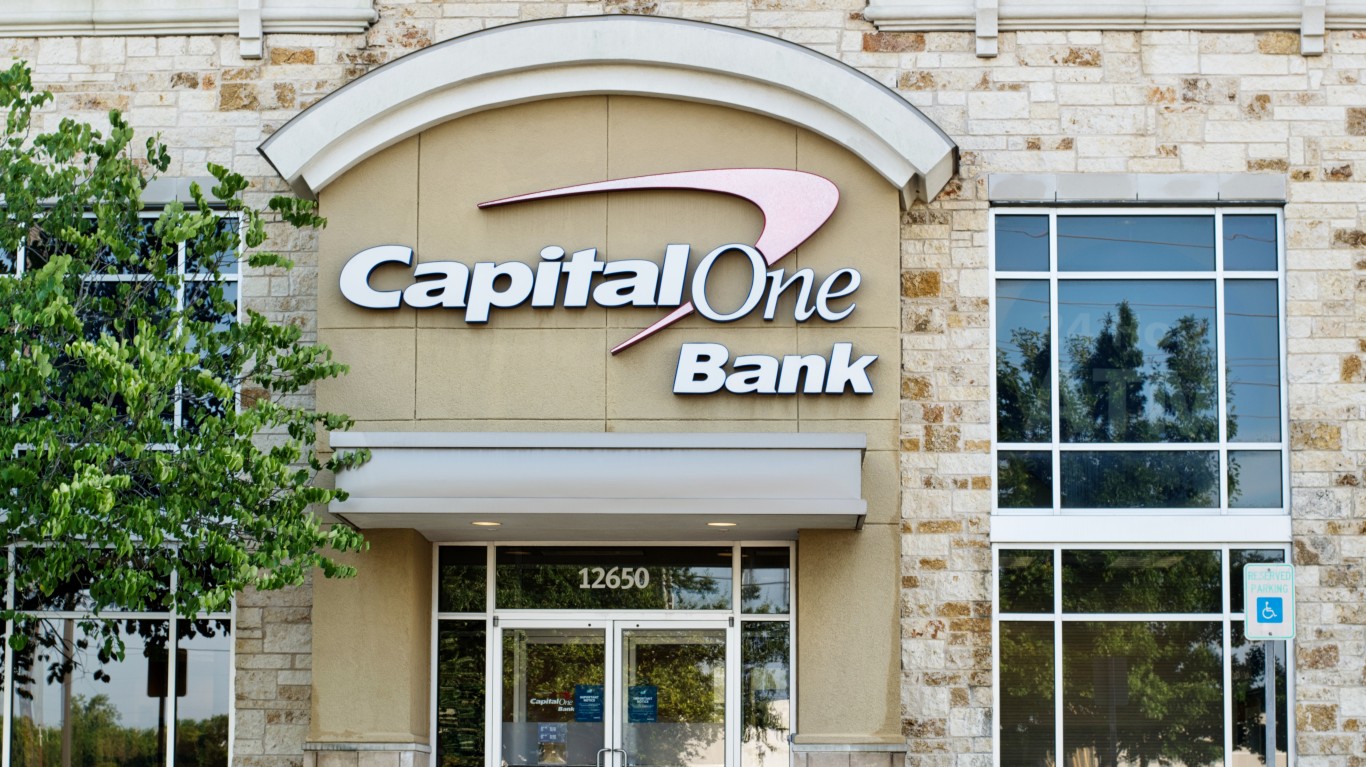Personal Finance
Most Americans Are Blind to How Much Banks Are Paying Today

Published:
Last Updated:

Stop me if you’ve heard this joke before, but it’s a real hoot if you haven’t.
Back in the mid 20-teens, as the Federal Reserve kept interest rates low and most banks, taking their cue from the Fed, paid miniscule interest rates on deposits, consumers began gravitating towards a new breed of online-first and online-only banks.
The Consumer Financial Protection Bureau is suing Capital One for alleged “deceptive acts and practices” with respect to its customers.
For years, CFPB says Capital One paid below market interest rates on one kind of bank account while advertising high rates on a similarly named account type.
Capital One isn’t the only bank paying low interest rates. But other banks pay much better rates.
Earn up to 3.8% on your money today (and get a cash bonus); click here to see how. (Sponsored)
These new banks, and subsidiaries of older banks, offered significantly better-than-average interest rates. One of the most generous was Capital One, which routinely boasted in its advertisements that its “360 Savings” account paid “one of the nation’s” top,” or “best,” or “highest” interest rates. From 2013 to 2019, says the US Consumer Financial Protection Bureau, Capital One did in fact pay competitive interest rates, and indeed, its rates were more generous than most.
But in 2019, Capital One allegedly pulled a switcheroo. The company created a new product with almost the same name, “360 Performance Savings,” and then proceeded to advertise this account with almost the same language, saying it offered “one of the nation’s top savings rates.” 360 Savings depositors (and I was one at the time, so I can confirm this), understandably assumed the two accounts were identical, and that they were earning the higher interest rates advertised for the 360 Performance Savings account on their existing 360 Savings accounts.
But they weren’t.
Far from it.
In fact, Capital One allegedly “froze” its 360 Savings account interest rate at 0.3%, even as it advertised rates on the 360 Performance Savings account of as much as 14 times the interest rate paid by 360 Savings. And unless customers checked their interest payments carefully with a calculator, they probably never noticed the difference.
Pretty funny, huh?
Capital One appears to have laughed all the way to the bank, as it paid miniscule interest to its 360 Savings customers, but loaned out their deposits at much higher market rates. The difference between what Capital One was paying, and what customers thought they were earning over a period of several years, may have reached as much as $2 billion, says CFPB. And as a result, the CFPB is now suing Capital One for “deceptive acts and practices” inflicted on its customers.
As described by the CFPB in its lawsuit, Capital One’s shenanigans with its 360 Savings account constitute one of the most deplorable examples in recent memory, of banks failing to inform their customers of better interest rates when they’re available. But it’s hardly the only example. Every day of the banking work week, banks happily accept deposits from their customers and pay out interest rates much worse than are available elsewhere.
Even today, reports CBS News, more than two years after the Federal Reserve began raising interest rates again, “some banks haven’t boosted rates on their savings accounts, creating a gap between low-and top-paying accounts, similar to that of Capital One’s two offerings.” For example, according to Bankrate.com, the average savings account in the U.S. currently pays about 0.6% annual interest, while Capital One is still paying just 0.5% on its old 360 Savings accounts, versus 3.7% on its identical-in-all-but-name 360 Performance Savings account.
Capital One may not be the worst offender. Chase Bank, for example, has been paying its customers something like a 0.01% interest rate on savings accounts for as long as I can remember. But at least it’s upfront about it, advertising the rate right on its website.

So what should customers do about this? Well first of all, find out what interest rate you’re earning on your account! Here’s how to do that: open your online account, and look for your most recent monthly interest payment. Divide that number by the money in your account, and then multiply by 12 to get your annual interest rate.
For example, if you received $10 in interest last month, and your account balance is $10,000, then 10/10,000 x 12 = 0.012, or an annual interest rate of 1.2%.
If your calculation shows you earning 0.6% or better, then at least you’re not doing worse than average. To get an even better rate, though, consider opening a high-yield savings account with a name-brand bank paying 3% interest or better, like Goldman Sachs or American Express, Capital One or SoFi.
The last few years made people forget how much banks and CD’s can pay. Meanwhile, interest rates have spiked and many can afford to pay you much more, but most are keeping yields low and hoping you won’t notice.
But there is good news. To win qualified customers, some accounts are paying almost 10x the national average! That’s an incredible way to keep your money safe and earn more at the same time. Our top pick for high yield savings accounts includes other benefits as well. You can earn up to 3.80% with a Checking & Savings Account today Sign up and get up to $300 with direct deposit. No account fees. FDIC Insured.
Click here to see how much more you could be earning on your savings today. It takes just a few minutes to open an account to make your money work for you.
Thank you for reading! Have some feedback for us?
Contact the 24/7 Wall St. editorial team.